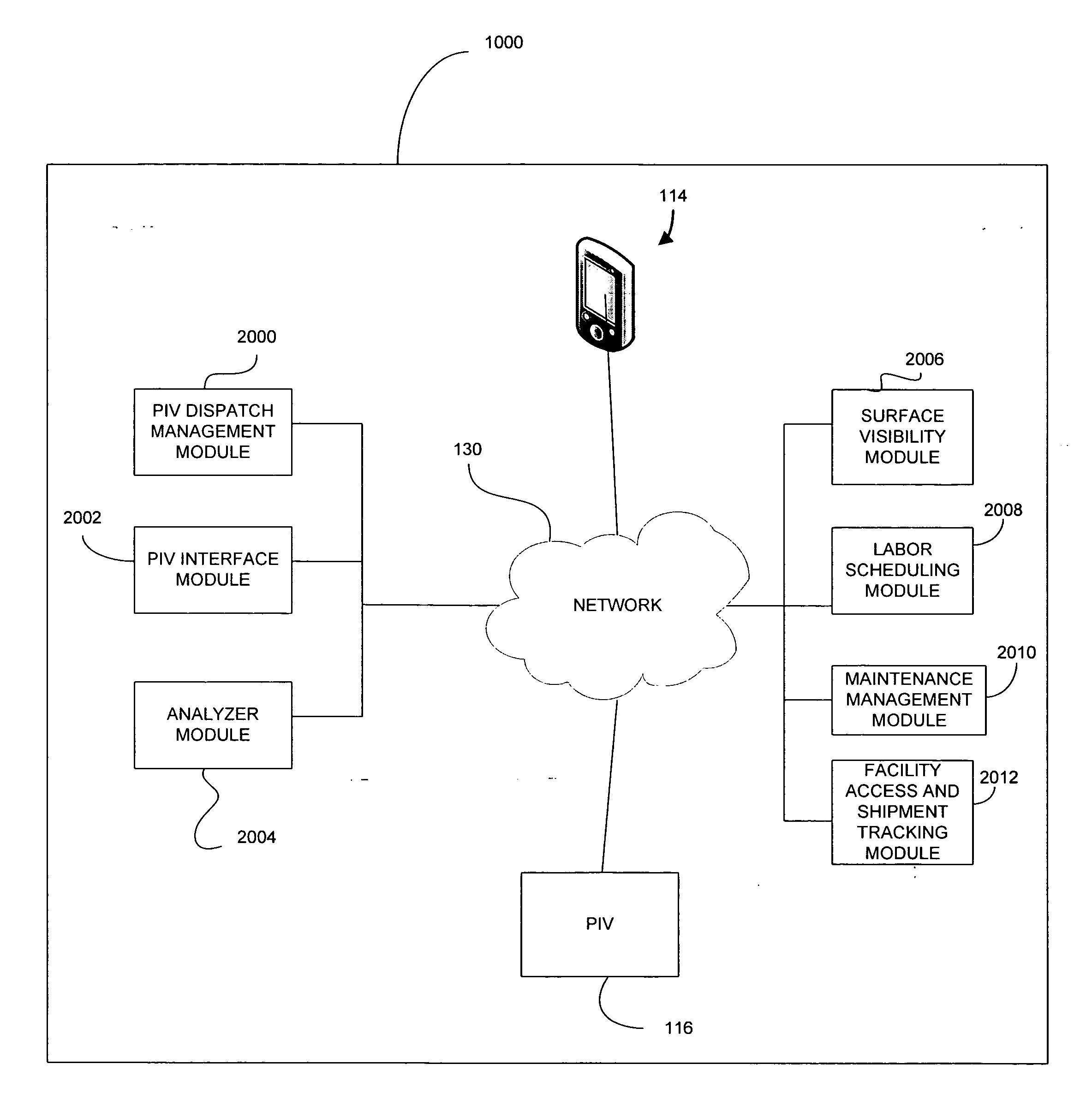Systems and methods for creating routes for powered industrial vehicles
a technology for industrial vehicles and routes, applied in the direction of process and machine control, navigation instruments, anti-theft devices, etc., can solve the problems of difficult tracking of the location of each piv and distribution, difficult to ascertain the availability of a piv, and other operators may be less motivated
- Summary
- Abstract
- Description
- Claims
- Application Information
AI Technical Summary
Benefits of technology
Problems solved by technology
Method used
Image
Examples
Embodiment Construction
[0036] Various embodiments of the invention provide for a system and method for collecting interrelated data to achieve automation of the operation and management of PIVs.
[0037] Aspects of the invention may be practiced in various environments in which PIVs are utilized including, but not limited to, docks, hotels, campuses, airports, and warehouses. In an embodiment described herein, aspects of the invention may be implemented in a facility 100 as shown in FIG. 2. As noted above, the facility 100 may be any of a number of different types of operating environments in which PIVs are used for transporting materials between locations. By way of example and not of limitation, the facility 100 may be a fulfillment warehouse, a factory, a shipment facility, a mail processing facility, or some other facility in which PIVs are used to transport materials or cargo.
[0038] The facility 100 may include a loading dock 102. The loading dock 102 is a platform where vehicles such as trucks or tra...
PUM
 Login to View More
Login to View More Abstract
Description
Claims
Application Information
 Login to View More
Login to View More - R&D
- Intellectual Property
- Life Sciences
- Materials
- Tech Scout
- Unparalleled Data Quality
- Higher Quality Content
- 60% Fewer Hallucinations
Browse by: Latest US Patents, China's latest patents, Technical Efficacy Thesaurus, Application Domain, Technology Topic, Popular Technical Reports.
© 2025 PatSnap. All rights reserved.Legal|Privacy policy|Modern Slavery Act Transparency Statement|Sitemap|About US| Contact US: help@patsnap.com



